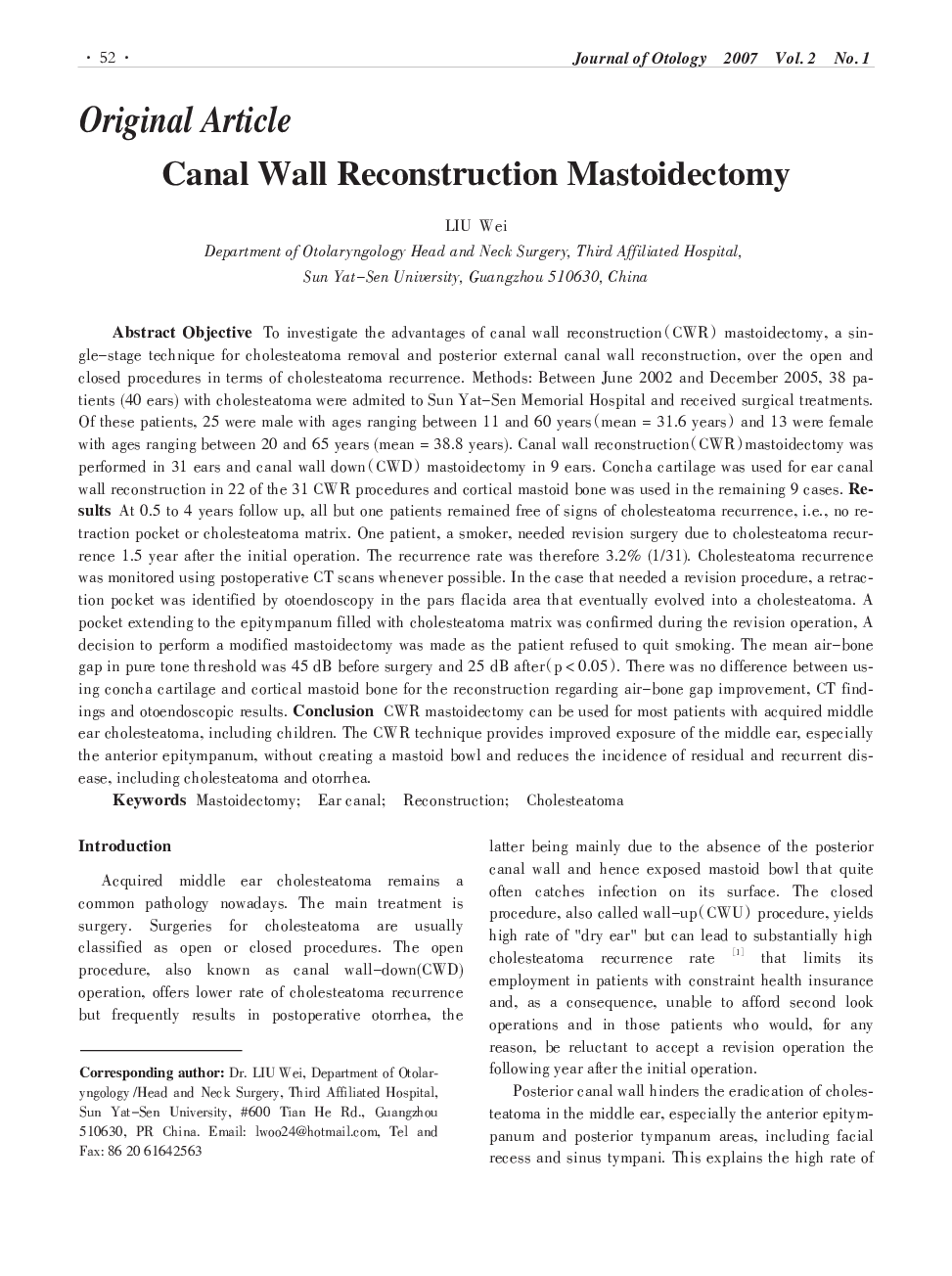| Article ID | Journal | Published Year | Pages | File Type |
|---|---|---|---|---|
| 4116900 | Journal of Otology | 2007 | 4 Pages |
ObjectiveTo investigate the advantages of canal wall reconstruction (CWR) mastoidectomy, a single-stage technique for cholesteatoma removal and posterior external canal wall reconstruction, over the open and closed procedures in terms of cholesteatoma recurrence.Methods:Between June 2002 and December 2005, 38 patients (40 ears) with cholesteatoma were admited to Sun Yat-Sen Memorial Hospital and received surgical treatments. Of these patients, 25 were male with ages ranging between 11 and 60 years(mean = 31.6 years) and 13 were female with ages ranging between 20 and 65 years (mean = 38.8 years). Canal wall reconstruction (CWR) mastoidectomy was performed in 31 ears and canal wall down(CWD) mastoidectomy in 9 ears. Concha cartilage was used for ear canal wall reconstruction in 22 of the 31 CWR procedures and cortical mastoid bone was used in the remaining 9 cases.ResultsAt 0.5 to 4 years follow up, all but one patients remained free of signs of cholesteatoma recurrence, i.e., no retraction pocket or cholesteatoma matrix. One patient, a smoker, needed revision surgery due to cholesteatoma recurrence 1.5 year after the initial operation. The recurrence rate was therefore 3.2% (1/31). Cholesteatoma recurrence was monitored using postoperative CT scans whenever possible. In the case that needed a revision procedure, a retraction pocket was identified by otoendoscopy in the pars flacida area that eventually evolved into a cholesteatoma. A pocket extending to the epitympanum filled with cholesteatoma matrix was confirmed during the revision operation, A decision to perform a modified mastoidectomy was made as the patient refused to quit smoking. The mean air-bone gap in pure tone threshold was 45 dB before surgery and 25 dB after (p < 0.05). There was no difference between using concha cartilage and cortical mastoid bone for the reconstruction regarding air-bone gap improvement, CT findings and otoendoscopic results.ConclusionCWR mastoidectomy can be used for most patients with acquired middle ear cholesteatoma, including children. The CWR technique provides improved exposure of the middle ear, especially the anterior epitympanum, without creating a mastoid bowl and reduces the incidence of residual and recurrent disease, including cholesteatoma and otorrhea.
